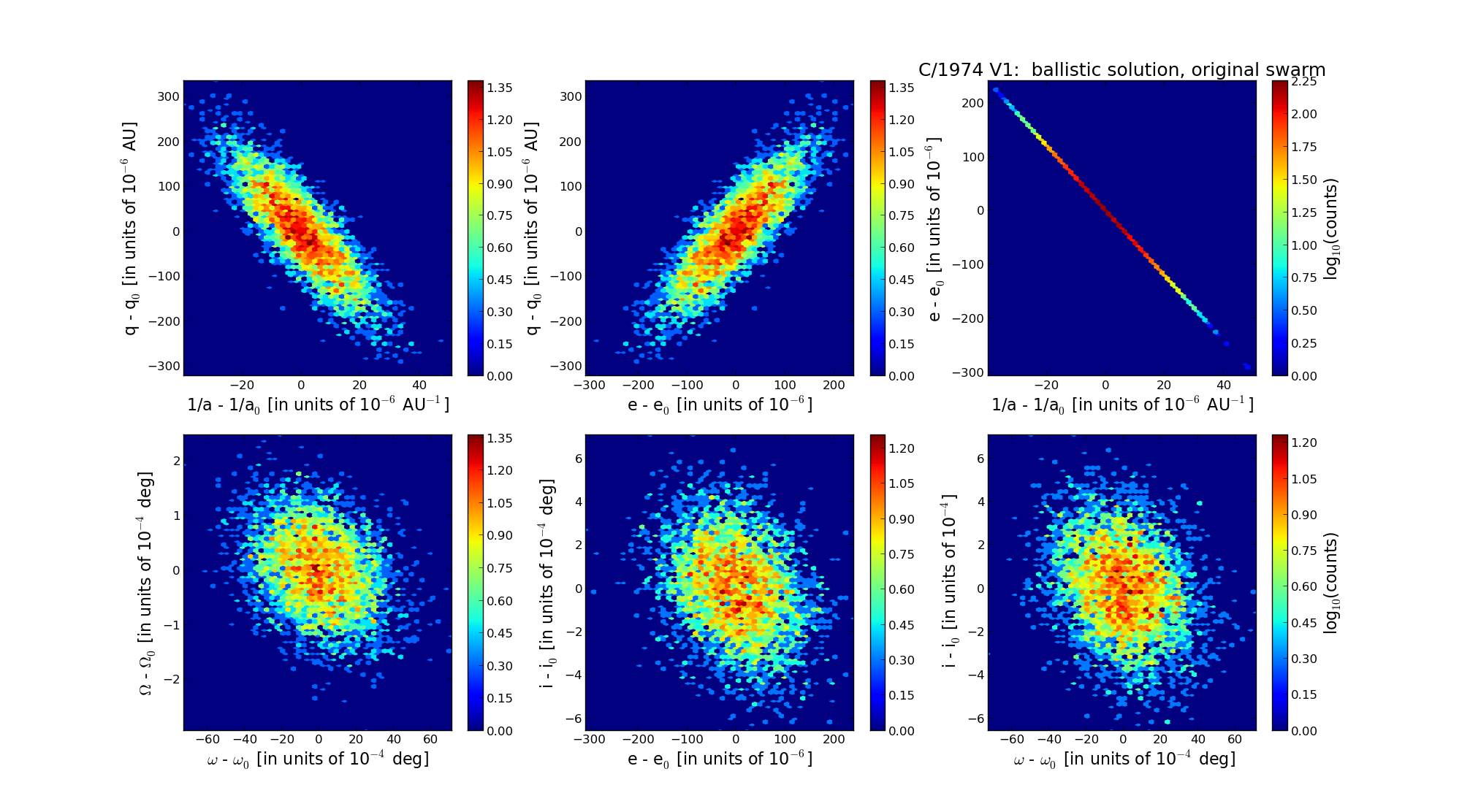| Solar System Dynamics & Planetology Group |
 |
C/1974 V1 van den Bergh |  |
| Solar System Dynamics & Planetology Group |
 |
C/1974 V1 van den Bergh |  |
| number of observations | 46 |
| number of residuals | 92 |
| data interval | 1974 Nov. 12 — 1976 Oct. 31 |
| rms [arcsec] | 1.16 |
| orbit quality class | 1b |
| Epoch (TT) | 19740821.0 | = JD 2442280.5 |
| time of perihelion passage (TT) | 19740807.763518 | ± 0.018901 |
| perihelion distance | 6.01885058 | ± 0.00009141 |
| eccentricity | 1.00391195 | ± 0.00007181 |
| argument of perihelion [deg] | 151.758534 | ± 0.001823 |
| longitude of the ascending node [deg] | 226.104055 | ± 0.000069 |
| inclination [deg] | 60.853679 | ± 0.000200 |
| inverse semimajor axis [10-6 au-1] | -649.95 | ± 11.91 |

| Epoch (TT) | 16670721 | |
| time of perihelion passage (TT) | 19740808.164070 | ± 0.019246 |
| perihelion distance | 6.01579264 | ± 0.00009240 |
| eccentricity | 0.99989464 | ± 0.00007279 |
| argument of perihelion [deg] | 151.829672 | ± 0.001856 |
| longitude of the ascending node [deg] | 226.121112 | ± 0.000068 |
| inclination [deg] | 60.878468 | ± 0.000198 |
| inverse semimajor axis [10-6 au-1] | 17.51 | ± 12.10 |
| Epoch (TT) | 22880705 | |
| time of perihelion passage (TT) | 19740806.921353 | ± 0.019374 |
| perihelion distance | 6.01222855 | ± 0.00009311 |
| eccentricity | 0.99654636 | ± 0.00007283 |
| argument of perihelion [deg] | 151.677213 | ± 0.001868 |
| longitude of the ascending node [deg] | 226.099858 | ± 0.000068 |
| inclination [deg] | 60.909106 | ± 0.000199 |
| inverse semimajor axis [10-6 au-1] | 574.44 | ± 12.12 |